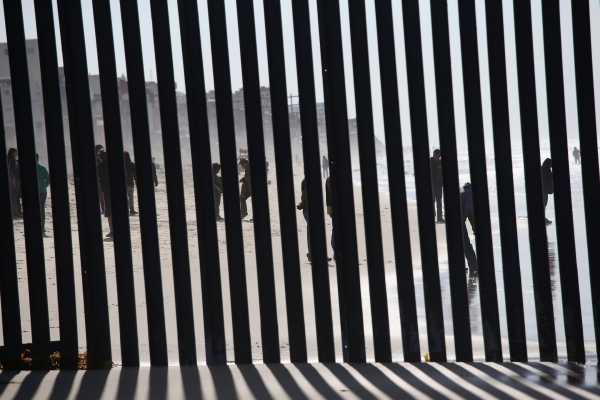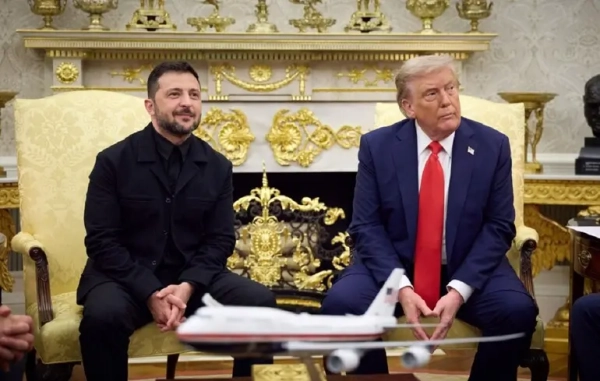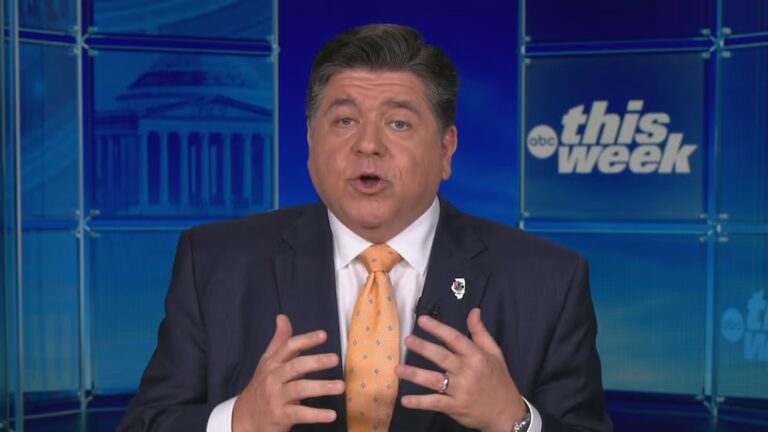
If the federal government shuts down at midnight Friday — and it seems like it might! — it will be over 150 miles of steel poles.
That’s the difference between the $5 billion Donald Trump has turned into a red line for his border wall, and up to $1.6 billion for border security more broadly that congressional Democrats and Republicans had been discussing as a compromise.
After Trump made it clear he wouldn’t sign a bill that didn’t give him $5 billion, House Republicans hastily passed a bill that gave Trump even more than that — without the usual strings attached about where and what he was allowed to build with it. But the House bill is a nonstarter in the Senate, where it needs bipartisan support to reach the Senate’s 60 vote threshold, and Senate Republicans are unwilling to blow up the filibuster as Trump is urging to pass the bill with only Republican votes.
The wall has become so closely identified with Trump himself that it’s often hard to remember that the money actually goes to the building of physical barriers along the US-Mexico border. Here’s what various proposals in the current spending fight would actually do.
What Trump wants: $5 billion for 215 miles of border wall
Ultimately, the Trump administration wants to build hundreds of miles of border barriers — a lot more than $5 billion can provide. But it has identified particular stretches of the border as top priorities, and a $5 billion appropriation would allow it to blast through several of them.
The Department of Homeland Security estimates that if it got the whole $5 billion Trump has made his red line for wall funding, it would be able to build 215 miles’ worth of barriers along the US-Mexico border. Most of this — about 150 miles — would be built where no physical barriers currently exist; the rest would be intended to replace some of the older and less imposing barriers along the border.
The administration’s top priority is building about 104 miles of barriers in the Rio Grande Valley — which has become by far the most common area for Central American families to cross between ports of entry (i.e. illegally). Pretty much all of that would be new barriers, since pre-Trump there weren’t many man-made barriers along the existing natural barrier of the Rio Grande.
With the rest of the money, it would want to build (in order of priority) 27 miles of barriers in the Yuma sector in Arizona; 14 miles in the El Centro sector in eastern California; and 55 miles of barriers in the Laredo sector in western Texas. It would round out the $5B with five miles in the San Diego sector, and nine miles in the El Paso sector (far west Texas and New Mexico).
All of this would be a bollard barrier made of steel poles, erected close enough together to prevent entry but far enough apart that Border Patrol agents can see what’s happening on the other side. (This is the “see-through wall” that Trump got excited about back in 2017.) Previous administrations referred to bollards as fencing; the Trump administration calls it a wall; and Trump himself has started calling them “steel slats” because he thinks it sounds tougher.
These are all estimates because it’s impossible to predict exactly how much the government will get for its money. In particular, the more legal action the administration has to take in order to procure the land for building the wall, the more expensive it will be to build. And building a wall out of bollards means buying a lot of steel — which might be an expensive proposition when Trump is placing tariffs on imported steel and aluminum.
What the House authorized: $5.71 billion for an unspecified amount of border wall
Generally, Congress appropriates money for specific projects. But the bill hastily passed by the House on Thursday night simply writes a check for US Customs and Border Protection for “Construction, Procurement and Infrastructure” — to the tune of $5,710,357,000.
To state the obvious, that is more money than the $5 billion Trump insisted on.
It’s not clear exactly what the extra $710 million could do. It’s possible that the Trump administration could use it to build more than the 215 miles of barriers it wants; it’s also possible that it could use that money for technology, manpower, or something else. Or it could simply exist as cushion — just in case steel is more expensive than anticipated.
What the Senate has floated: $1.6 billion for 65 miles of “fencing”
When the Senate’s subcommittee for Homeland Security appropriations in June passed a DHS budget for fiscal year 2019, it included $1.6 billion for the Trump administration to build 65 miles of barriers in the Rio Grande Valley. The subcommittee called it “pedestrian fencing,” but in practice it would be identical to the barrier the Trump administration is now calling a wall.
This was Senate Minority Leader Chuck Schumer’s offer to Trump earlier this month, to the consternation of progressives who wanted no money whatsoever for “Trump’s wall.” It’s since been revived as a possibility by Senate Majority Whip John Cornyn, who has suggested it as a way to avert a shutdown Friday.
Democrats in the House have said they wouldn’t vote for even $1.6 billion in “wall money.” They may thread the needle the same way the Senate has, and decide that they are going to call it “fencing” or just “border security,” even as they give the administration money for something Trump will call a wall. Or they could decide that as long as Republicans insist on talking about $1.6 billion for a wall, they won’t vote for it — forcing it to pass the House with Republican votes and the Senate with Democratic ones.
Focusing on the Rio Grande Valley is in line with DHS’s current priorities, which makes sense given that it’s the epicenter for the current influx of Central American families (often seeking asylum). But as recently as Thursday, Trump made it clear that he wouldn’t sign a bill that didn’t give him $5 billion — and even if he indicated he would cave, the Freedom Caucus might not.
What is already happening: about $1.7 billion for about 120 miles of wall
Of course, while all of this is happening, the Trump administration continues to build border barriers based on the money it received in fiscal years 2017 and 2018. Even if Trump didn’t get a penny of new wall funding, they’d be set to keep building barriers through next year.
According to DHS, the money it got for 2017 (about $341 million, specifically restricted by Congress for use replacing existing barriers) is allowing them to replace about 40 miles of walls and fences — of which about 34 miles have already been built.
The money for fiscal year 2018 — about $1.375 billion dedicated to particular areas — is still being doled out in contracts. Construction hasn’t yet started on any of the 2018 projects. But the Department of Homeland Security says that they’ve awarded $500 million in contracts already — for 25 miles of levee wall in the Rio Grande Valley, and replacement barriers in Arizona — and are about to close on contracts worth an additional $500 million to build replacement barriers in California and some new wall in the Rio Grande Valley.
The first of those projects — the levee wall in the Rio Grande — is slated to break ground in February. The others will be constructed over the course of 2019, if everything goes according to plan.
It’s not alarming that DHS hasn’t already built everything it wanted to build with the money it’s already been given; the contracting process often takes a while, and there’s also the small problem of getting ownership of the land.
DHS maintains that this step of the process, in particular, is going a lot faster under Trump than it has under previous presidents, largely because it’s such a high priority — so that, for example, there are government attorneys who are dedicated full-time to the eminent-domain lawsuits to gain ownership of border land. (According to DHS, many of the landowners they take to court actually want to sell their land to the government, but they have to go to court to condemn the property anyway because it’s not always legally clear they have the legal title to sell.)
The Trump administration has gone from insisting on concrete barriers that Mexico would pay for, to trumpeting the existence of a “wall” made out of materials that were already in use before Trump went down the escalator at Trump Tower to declare its candidacy. If it wants to, it can take whatever barriers it ends up building, and declare victory. The question of how much wall is enough is much less a question of policy than of what Trump himself will be satisfied with — or have to reconcile himself to.
Sourse: vox.com






